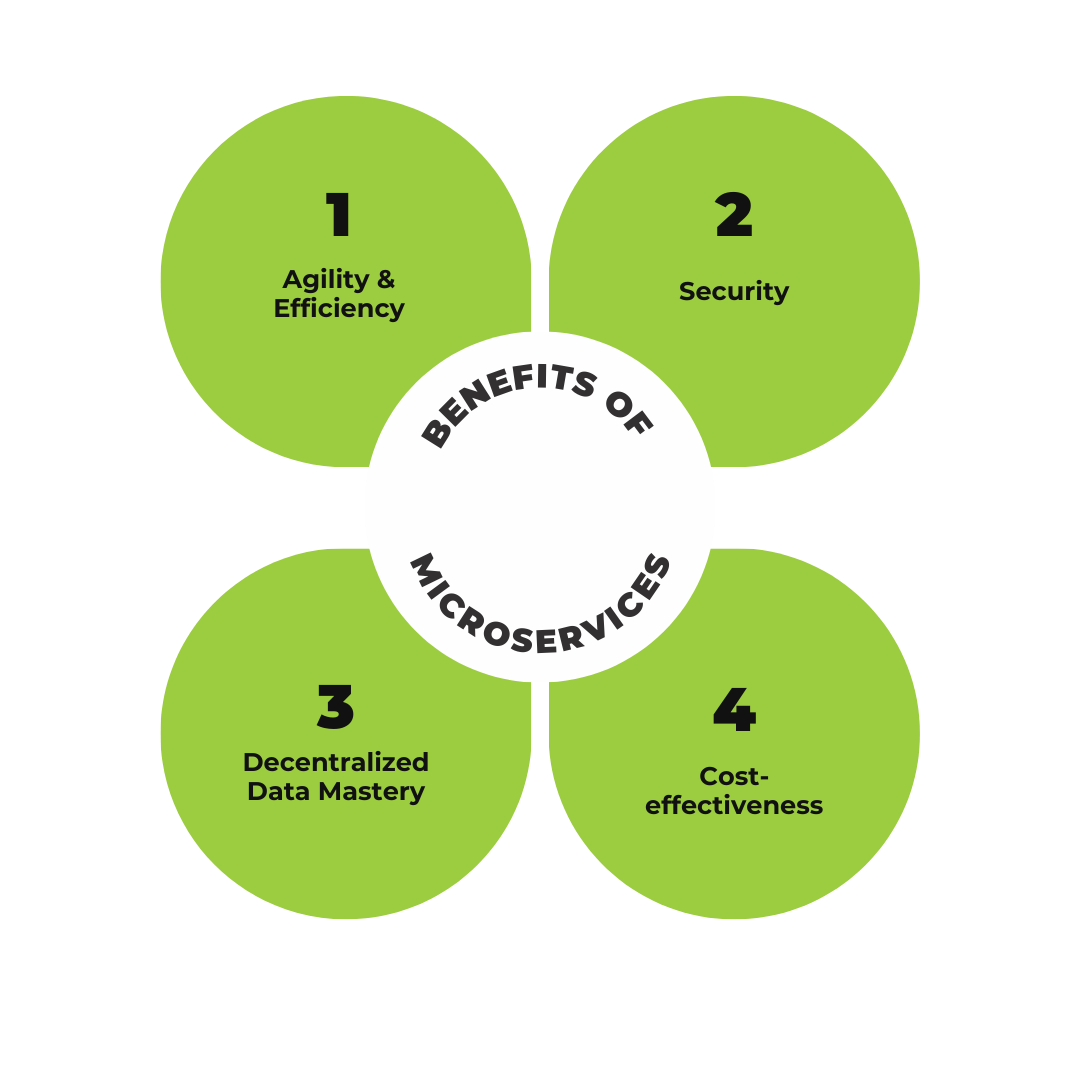In the financial industry, rapid innovation is not just an asset but a necessity.
Incidentally, with its features and advantageous characteristics, the microservices architecture sure looks like as a great choice of adaptability and resilience for this sector. This approach is not merely a technical preference; it’s a strategic enabler, especially pertinent for banking and FinTech applications that demand agility and precision.
Since the financial world is complex, teeming with operations that range from routine transactions to intricate risk assessments, the adoption of the microservices architecture can untangle this complexity, resulting in applications that are both robust and flexible.
But what exactly does this entail for the banking and FinTech sectors?
A Modular Approach for Financial Giants
Think of microservices as specialized units in a financial ecosystem, each designed to execute a specific task impeccably.
These units, or services, are like individual gears in a sophisticated timepiece, operating independently yet contributing to the seamless function of the whole. This architectural style breaks down massive, unwieldy applications into smaller, manageable pieces that interact through well-defined APIs.
Why does this matter? Because in banking, an error in one process shouldn’t have the power to disrupt the entire system. Microservices ensure that a hiccup in payments doesn’t freeze loan processing. And when a particular service experiences a surge—say, a flurry of transactions during a holiday shopping spree—only that microservice scales, conserving resources and maintaining performance across the board.
Agility & Efficiency
In a realm where time equates to currency, FinTech companies thrive on their ability to deploy new features swiftly and seamlessly. Microservices architecture is akin to having an expert team where each member excels in their role, allowing for concurrent development, testing, and deployment, each in their own sandbox. This means faster rollouts, quicker adaptations to market shifts, and uninterrupted service continuity for customers.
For banking institutions, the stakes are even higher. Banks are no strangers to complex, regulatory-laden environments that call for significant customization. Microservices provide the much-needed agility to navigate these waters, offering the capacity to swiftly adjust modules like account management and fraud detection to meet emerging requirements.
Microservices & Security
With cybercrime forecasted to escalate to astronomical figures, security is a foundational element in every company’s operations.
Microservices architecture enhances security at the service level, introducing robust barriers against data breaches. Each microservice acts as a citadel, safeguarding its data, which ensures that even if one service is compromised, the breach remains contained, and the rest of the system stands unassailable.
Moreover, microservices architecture simplifies regulatory compliance. Each service can be tailored to meet stringent financial regulations, providing clarity and control over security measures, availability, and data transparency.
Decentralized Data Mastery
In contrast to traditional centralized databases, microservices promote decentralized data management – each service with its own database, tailored to its individual requirements.
This strategy not only allows for scalable and efficient data handling but also minimizes the impact of migrations and system modifications.
Doing More with Less
Cost-effectiveness is another hallmark of the microservices approach.
By facilitating targeted adjustments rather than overhauling entire applications, microservices reduce both development and maintenance expenses. The pinpoint focus of each service streamlines troubleshooting, enhancing system performance while conservatively utilizing resources.

Resilient Framework
Microservices are engineered to be fault-tolerant, employing strategies like circuit breakers to prevent failures from rippling through the system.
Resilience is about bouncing back swiftly, and microservices excel at this, offering rapid recovery pathways and ensuring uninterrupted service for users.
Agile & Continuous: The Beat of Modern Development
The agile methodology is embedded in the DNA of microservices, supporting continuous integration and deployment.
This facilitates a collaborative atmosphere where business needs align tightly with technical execution, delivering solutions that resonate with customer demands and driving a faster time-to-market – both aspects that are crucial to success in FinTech.
The Practical Payoffs
Considering all the theoretical benefits is one thing, but seeing microservices in action is another.
For instance, consider a financial auditing firm that transitioned from a monolithic structure to a microservices-based one. The result? Enhanced performance, fortified data security, and a more agile and responsive infrastructure that has positioned them as industry forerunners.
Why Microservices Matter
For the banking and FinTech spheres, microservices architecture is not just a technological choice; it’s a strategic imperative. It’s about constructing responsive systems that can pivot with market dynamics and customer expectations, bolstering scalability, security, and efficiency in the process.
The microservices model invites financial institutions to innovate and venture into new technological realms without risking the stability of their core systems. It’s about building a future-proof financial landscape that can weather changes and emerge stronger, more adaptable, and more attuned to the needs of a rapidly shifting market.
Is your FinTech venture ready to harness the transformative power of microservices architecture?
Connect with us to explore how this modular approach can revitalize your applications, streamline your operations, and secure your leading position in financial innovation!
If you would like to be informed about our opportunities in time, follow us on LinkedIn!
